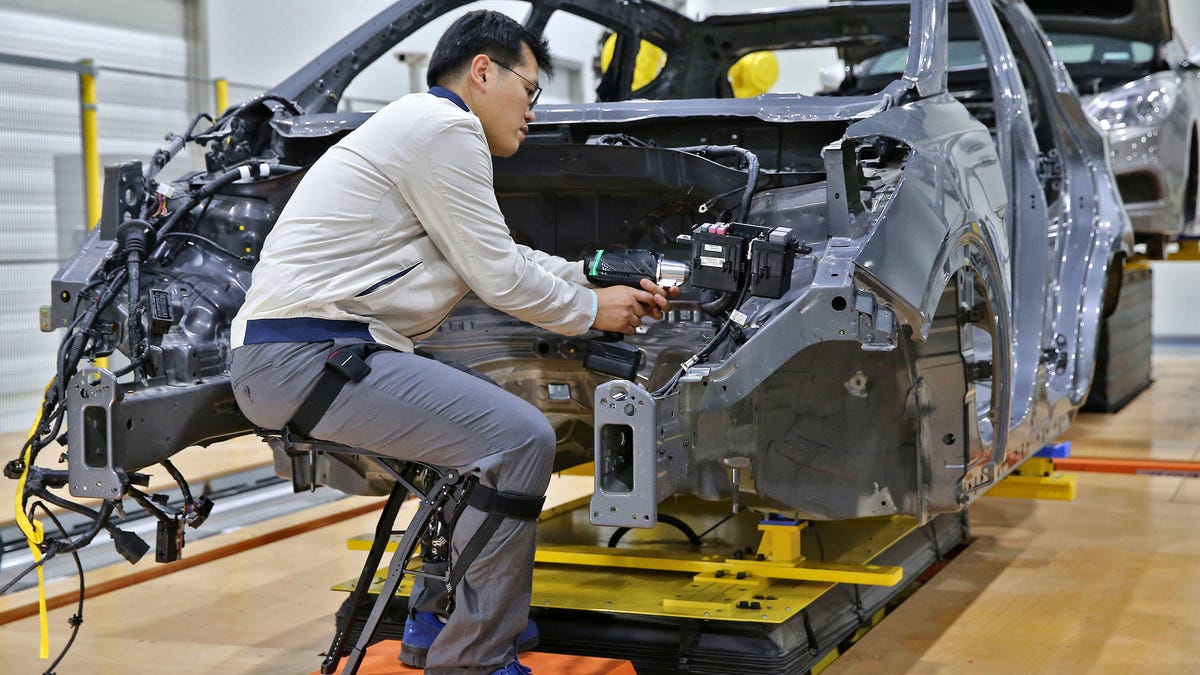Hyundai developed a wearable exoskeleton that's also a chair
It's one of two new exoskeletons designed to make line work easier.
Did you know Hyundai had a robotics division? Even if you didn't, the latest stuff coming out of that department could be a big boon to those in charge of putting your next car together.
Hyundai announced two new wearable exoskeletons from its robotics division Tuesday. As with many other developments for assembly workers, the goal of these new wearable devices is to improve efficiency and reduce the chance of worker injury.
The first is the Hyundai Chairless Exoskeleton (H-CEX). H-CEX is meant to protect the knees. The user fixes it to his or her body using belts on the waist, thigh and knee. The whole thing weighs about 3.5 pounds, and it contains a set of legs that deploy to act as a chair and reduce strain on the body. It can hold up to 330 pounds at one of three different angles. Hyundai tested this one at its North American factory last year.
The second is the Hyundai Vest Exoskeleton (H-VEX). H-VEX focuses on alleviating pressure on a person's body also, but further up than the knees. It takes the strain off a user's neck and back by giving the user an extra 132 pounds of strength with their arms over their head. This one will be tested in the US starting at the end of the year.
Hyundai isn't the only automaker coming up with devices to make life easier for line workers. Ford has deployed an upper-body exoskeleton called EksoVest as part of a trial period. It's meant to support a worker's arms during overhead tasks, and workers have already reported feeling less fatigued at the end of a shift. On the other side of Detroit, General Motors created a force-multiplying glove called RoboGlove that's designed to reduce tendon strain for jobs where workers grip items all day long.


